Search
Search Results
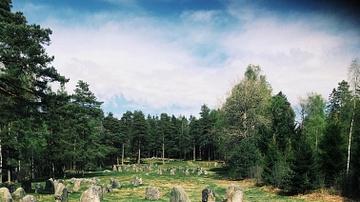
Article
Exploring Norways' Forgotten Stone Circles & Petroglyphs
Right outside the cities of Fredrikstad and Sarpsborg in South-East Norway, there are two archaeological, intriguing and beautiful sites, the Hunnfelt, a monument consisting of several stone circles and burial sites, and the Begbyfelt, a...

Video
The Sun Stone (The Calendar Stone), Aztec
The Sun Stone (or The Calendar Stone), Aztec, reign of Moctezuma II (1502-20), discovered in 1790 at the southeastern edge of the Plaza Mayor (Zocalo) in Mexico City, stone (unfinished), 358 cm diameter x 98 cm depth (Museo Nacional de...
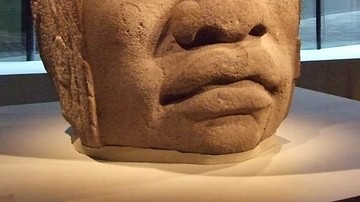
Article
Olmec Colossal Stone Heads
The stone head sculptures of the Olmec civilization of the Gulf Coast of Mexico (1200 BCE - 400 BCE) are amongst the most mysterious and debated artefacts from the ancient world. The most agreed upon theory is that, because of their unique...

Image
Aztec Sun Stone
The Aztec Sun Stone (also known as the Calendar Stone) is a representation of the five eras of the sun from Aztec mythology. The stone was part of the architectural complex of the Temple Mayor of Tenochtitlán and dates to c. 1427 CE. The...
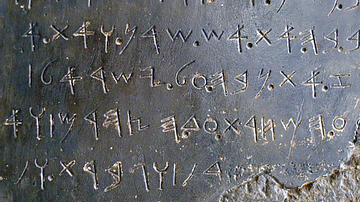
Image
Detail, Moabite Stone
A detail of the Moabite Stone, an ancient tablet dating to around 850 BCE, written by Mesha, the king of Moab (modern Jordan). (Louvre Museum, Paris)

Definition
Aztec Civilization
The Aztec Empire (c. 1345-1521) covered at its greatest extent most of northern Mesoamerica. Aztec warriors were able to dominate their neighbouring states and permit rulers such as Montezuma to impose Aztec ideals and religion across Mexico...
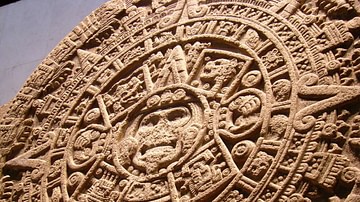
Image
Tonatiuh, Calendar Stone
The Aztec Sun Stone (also known as the Calendar Stone) is a representation of the five eras of the sun from Aztec mythology. Some scholars consider the central face to be that of Tonatiuh, the sun god, while others maintain it is the night...
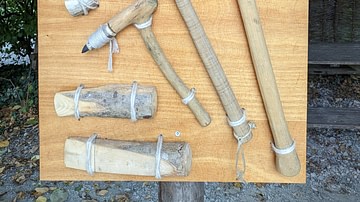
Image
Stone Age Tools (Modern Recreations)
A collection of modern recreations of Stone Age tools. The picture above shows (from top right to bottom left): A hatchet with a wing spar, used for felling trees A straight hatchet for shortening smaller pieces of wood (with a piece...

Image
The Coronation Stone at Kingston-upon-Thames
The Coronation Stone is an ancient sarsen stone block recording the coronations of seven Anglo-Saxon kings: Edward the Elder, Aethelstan, Edmund I, Eadred, Eadwig the Fair, Edward the Martyr and Aethelred the Unready, at Kingston-upon-Thames...

Image
Moabite Stone
The Moabite Stone, an ancient tablet dating to around 850 BCE, written by Mesha, the king of Moab (modern Jordan). (Louvre Museum, Paris)